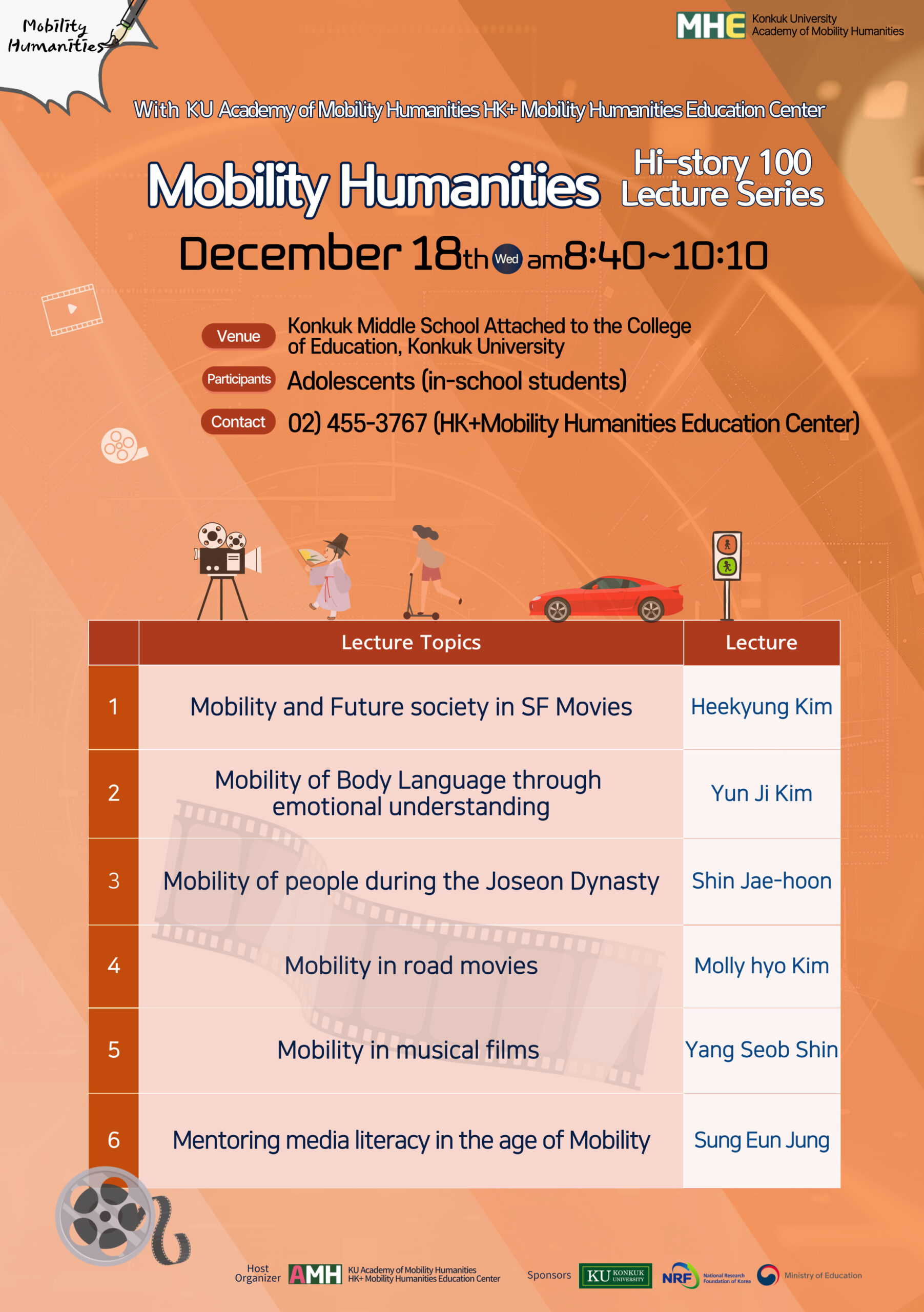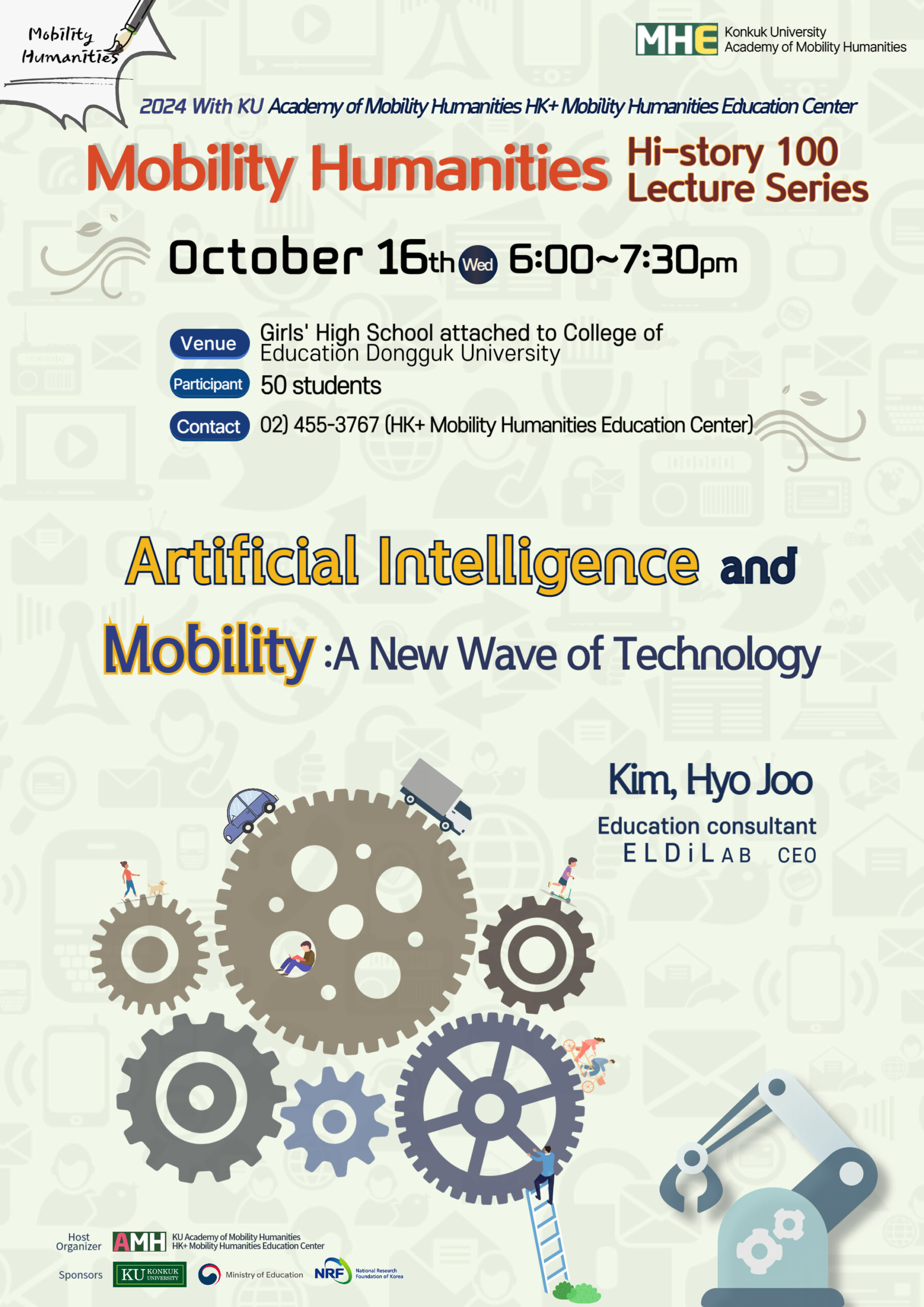- The representation of the desire to move in movies
- The etymology of the term “movie”
- The history of road movies
- The journey of characters in movies
- Exploring the representation of mobility in popular movies through genre conventions
- Differences in the production environments and cultural spheres of road movies in different countries
World
Artificial Intelligence and Mobility: The Wave of New Technology
1. The Concept and Case of Artificial Intelligence
- The concept of intelligence and artificial intelligence
- Introduction to the Dartmouth workshop and various definitions of artificial intelligence
- The concept of data-based artificial intelligence
- Cases: Artificial intelligence in ChatGPT, veterinary/biology (AlphaFold), entertainment, education, and more
- Introduction to the 2024 Nobel Prizes in Physics and Chemistry for protein prediction and neural network development using artificial intelligence
- The coexistence of artificial intelligence and humans
2. The Concept and Case of Mobility
- The various definitions of mobility
- Cases: Tesla’s autonomous car and humanoid robot, Waymo’s domestic autonomous car and the related artificial intelligence technology, Amazon’s robot logistics automation, and shared mobility services
3. Machine Learning and Deep Learning
- The concept and principles of machine learning
- The concept of deep learning
‘White Gold’ Sugar Changed the World
Sugarcane originated in tropical New Guinea, dating back to approximately 8,000 B.C. It reached the Philippines and India 2,000 years later, eventually spreading to South China. The earliest record of sugar was found in India in 400 B.C., where sugar was offered to the gods. From ancient times, sugar has been a healing and medicinal substance, as reflected in the English idiom, “A spoonful of sugar helps the medicine go down.” Exploring the history of sugar, from its transformation into massive sugar factories that shaped Cuba’s destiny to the brutal slave system on sugarcane plantations, the importation of enslaved Black people, the abolitionist movement, the revolutions in the United States, France, and Haiti, and the birth of contract laborers (new workers engaged in sugar production), this lecture traces the journey and trajectory of sugar, “white gold,” until it became an everyday thing on tables worldwide.
Mobility and User Experience – Emotion Sign
With the rise of the digital era, our communication methods are changing, and interaction styles are becoming more varied. People express their thoughts not only through sentences but also by using words and emojis. One clear example of this shift is the expanding emoji market. With images as small as 50 pixels, individuals use emojis to convey their opinions and feelings. By looking at examples of user experiences in communication and emojis, the lecture explores new perspectives and insights into co-evolutionary mobility.
What is Community? Is It Necessary? The End of Community as Being and the Necessity of Community Building
We often use terms like family community, village community, and local community. The word “community” is used in various ways worldwide and generally brings a positive meaning. However, it’s essential to question whether we truly experience a sense of “community” in the many contexts where the term is used. With the disappearing of traditional family and village conception and the rapid advancement of mobility technology leading to a more anonymous and fluid society, it could be argued that the tangible, fixed being of the community has faded away. Nevertheless, this lecture emphasises the necessity of forming a community as a utopian ideal in modern society. This lecture aims to highlight the significance of community movements that promote “cooperation” and “inclusivity,” which are difficult to achieve in today’s fluid and anonymous society, alongside illustrating cases of such movements.
Mobility and User Experience – Design Sign
There is no symbol revealing its attributes, such as the Arrow (->) or the At symbol (@). The Arrow offers clear directions, while we use the at symbol countless times daily to represent email. The Arrow signifies provision, influence, or change, embodying “this is this.” They serve as metaphors, representations, symbols, and sights. This lecture explores the concept of user experience through examples of design symbols in various channels, types, and cultural and social contexts.
- # Sign, symbol, design: design as symbol
- # Design signs utilising metaphors
- # Channels and types of design sign
- # Signs ever-changing and evolving
The Fourth Industrial Revolution, New Mankind in the Age of Mobility
Considering that the late 20th-century information revolution highlighted information goods and material goods, the era of the 4.0 industry is a new phase in human history where these two factors are converging again. Through technologies like robots, artificial intelligence (AI), big data, blockchain, the Internet of Things (IoT), 3D printing, and nanotechnology, we’re building cyber-physical systems that blend the real and virtual worlds, enabling automatic and intelligent control of objects. Moreover, as advancements in mobile technology and transportation continue, with increased movement of migration, people, things, information, and capital, we anticipate further enhancements in the mobility of humanity. Thus, this lecture focuses on “The New Humanity in the Mobility Society” in the 4.0 industry and examines the necessity of establishing new human and social values. In addition, this lecture enables young people to think about the potential changes in mobility society by the 4.0 Industry and discuss the advancement of humans and technology while contemplating prospects.




